The Horizons team features many influential Twitter users. This curates a wealth of insights, knowledge, and information about transformation in health and care from other thought leaders across the world. (Tip: to read an article or watch a video mentioned in a tweet, click on the blue text. To view the original tweet, click on the image).
Covid


Check-ins
Always start team meetings (virtual or face to face) with a person by person check in. We get better outcomes as it helps everyone feel included. Check in should be scheduled on the agenda & regarded as important as any other agenda item. #100RepeatTweets no.29. Graphic @kwiens62
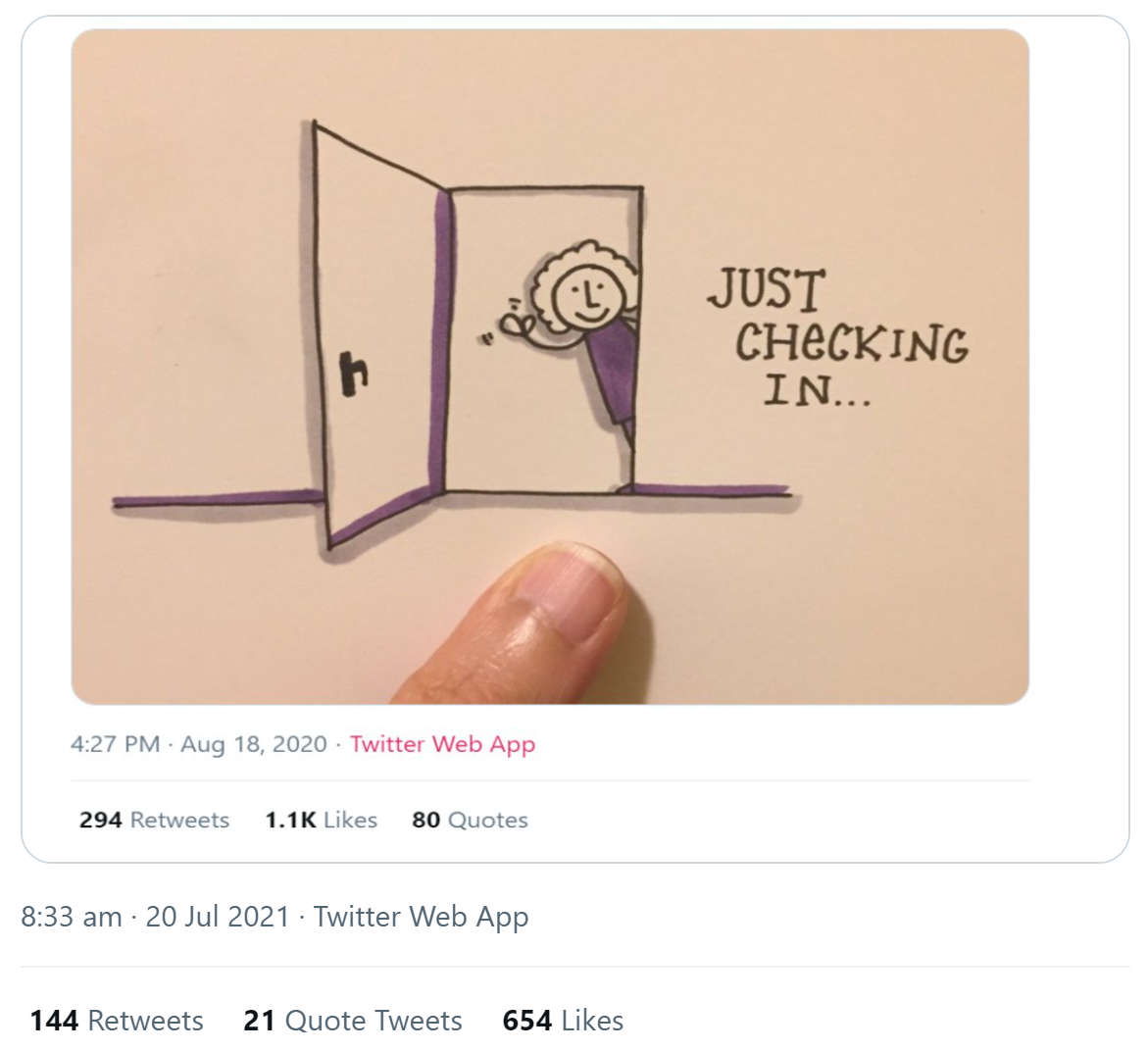
Helen has been tweeting about the importance of starting a meeting with a check in by the participants. She got asked for a link to more information about check ins. This piece by @GusRazzetti is very helpful. Helen added a graphic from @DoDifferent_
After Helen tweeted about the importance of starting meetings with a check in, Julie Beedon @JBVISTA sent her this graphic on the role & purpose of a check in (& check out) by Shelly Hossain. Check ins build belonging, create psychological safety & lead to better outcomes. 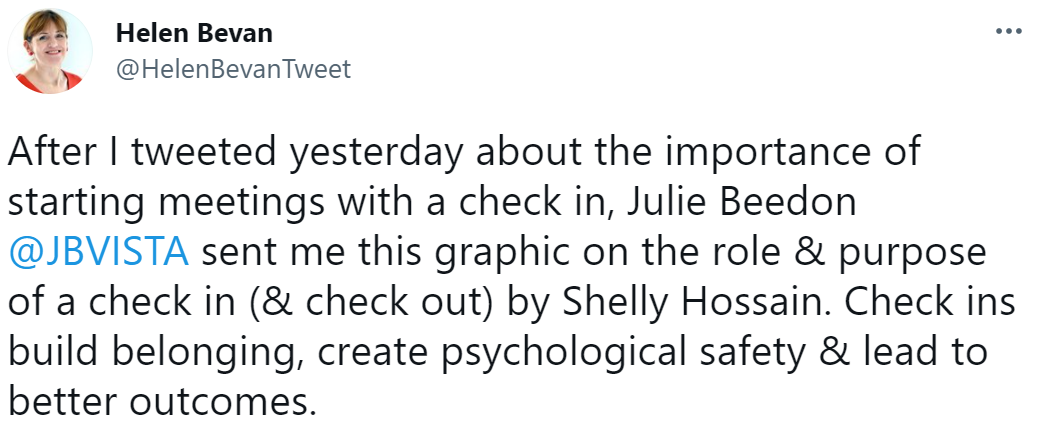


Wellbeing and Productivity
Since the 1990s, scores on the Torrance test (gauging creativity) have nosedived. Scientists suspect we're too busy, over-scheduled & digitally engrossed for creativity to blossom. We need more space for creative breakthroughs at work.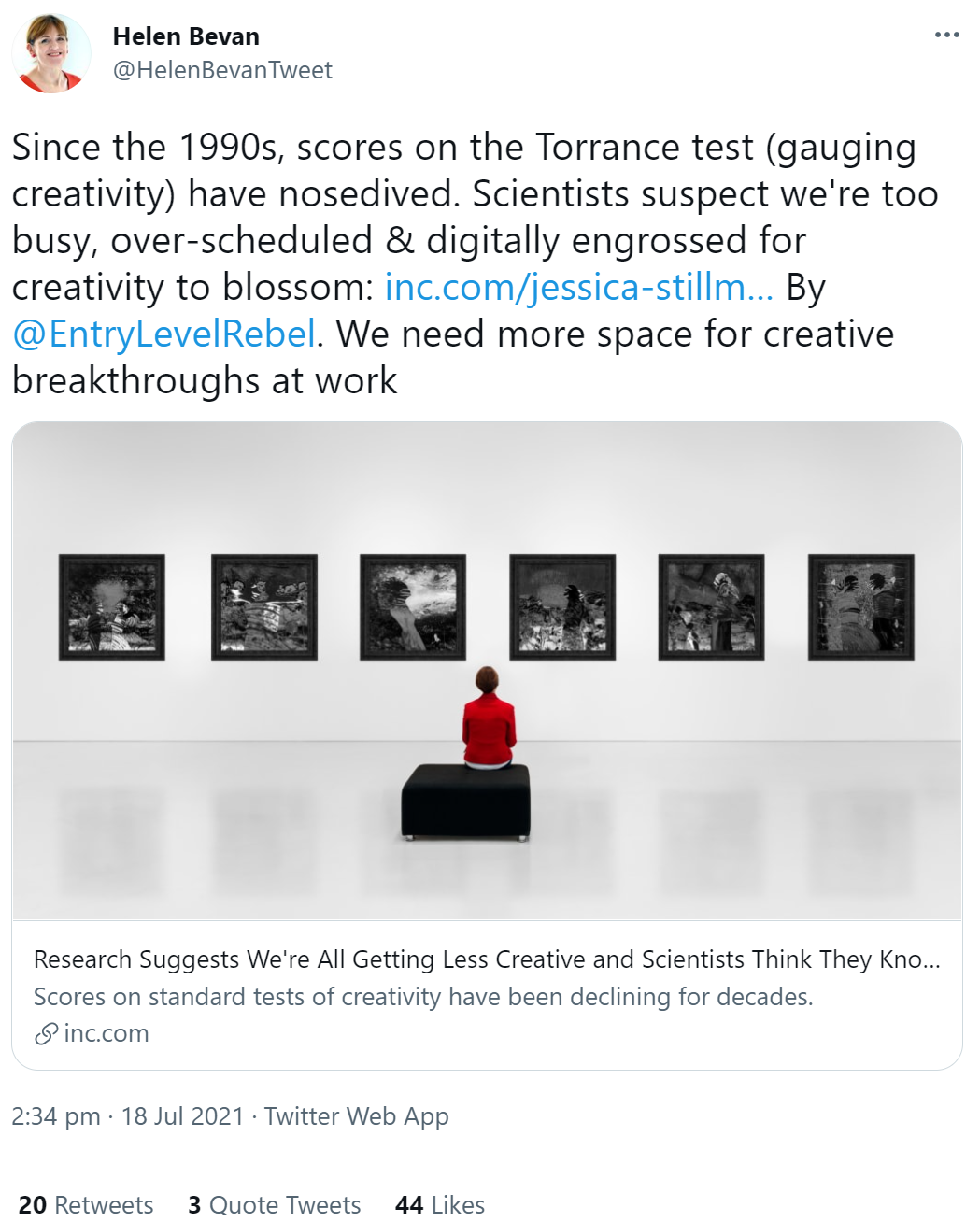
"People who brag about being in back-to-back meetings deeply misunderstand productivity": This article is quite close to the knuckle for people who work in cultures that judge value & status by busyness & full diaries. There is another way.

Change and Transformation
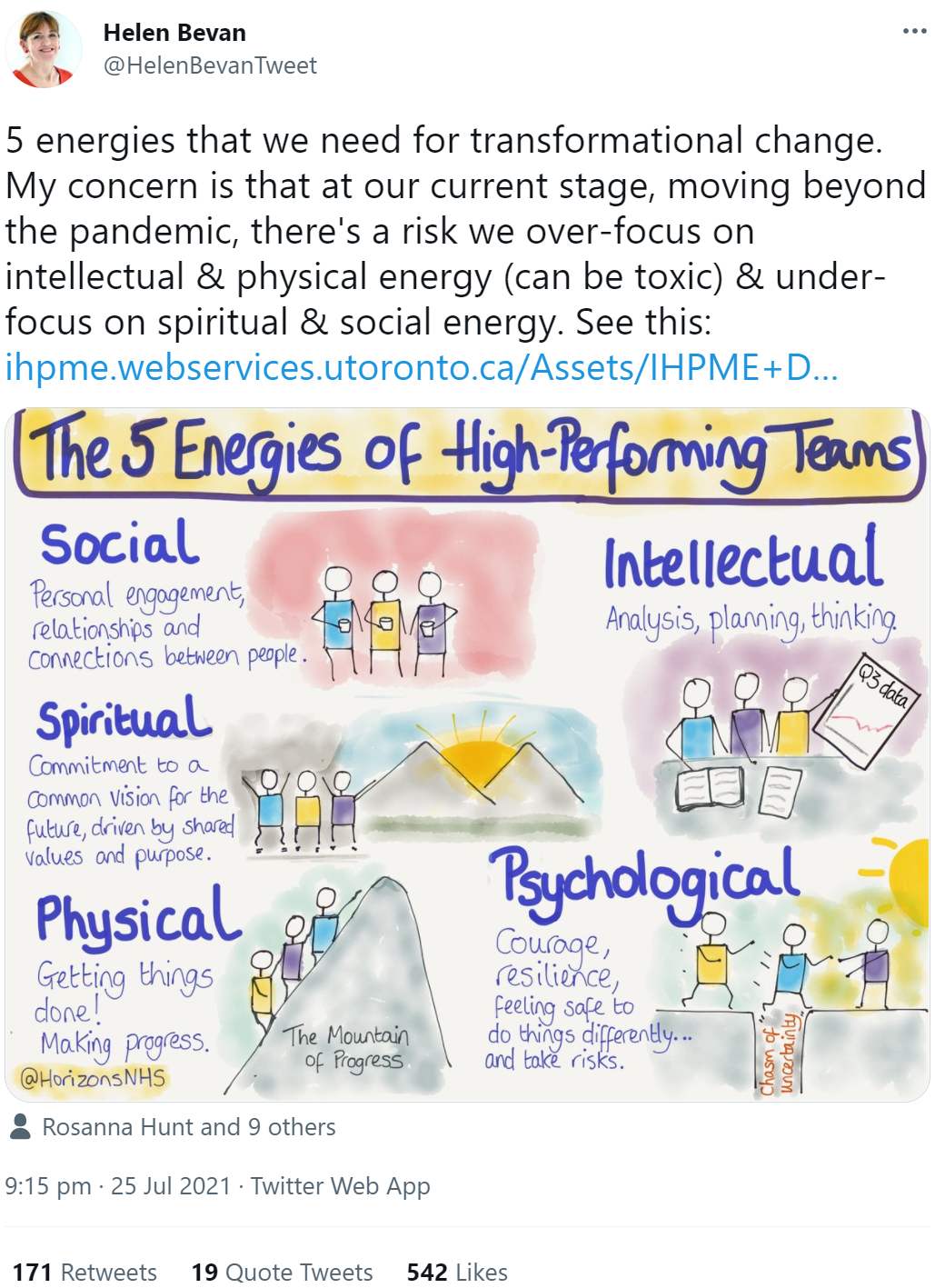
When you're setting up a new change initiative, are both parts of your "why" clear? - Head: facts, evidence base, logic - Heart: connection with emotions, values & things that matter deeply to people. Head & heart give us the strongest why. TY @traceyezard @sherrillknezel
Making large scale, transformational change stick: 3 steps leaders can take. These might seem obvious, but too often as leaders we don't give enough priority & energy into sustaining, rather we move on rapidly to the next change priority.
How leaders can sow seeds for transformation: 1) Support small groups of enthusiasts - don't push change on the masses who are hard to convince 2) Weave a network of loose connections to spread it 3) Focus on shared values & shared purpose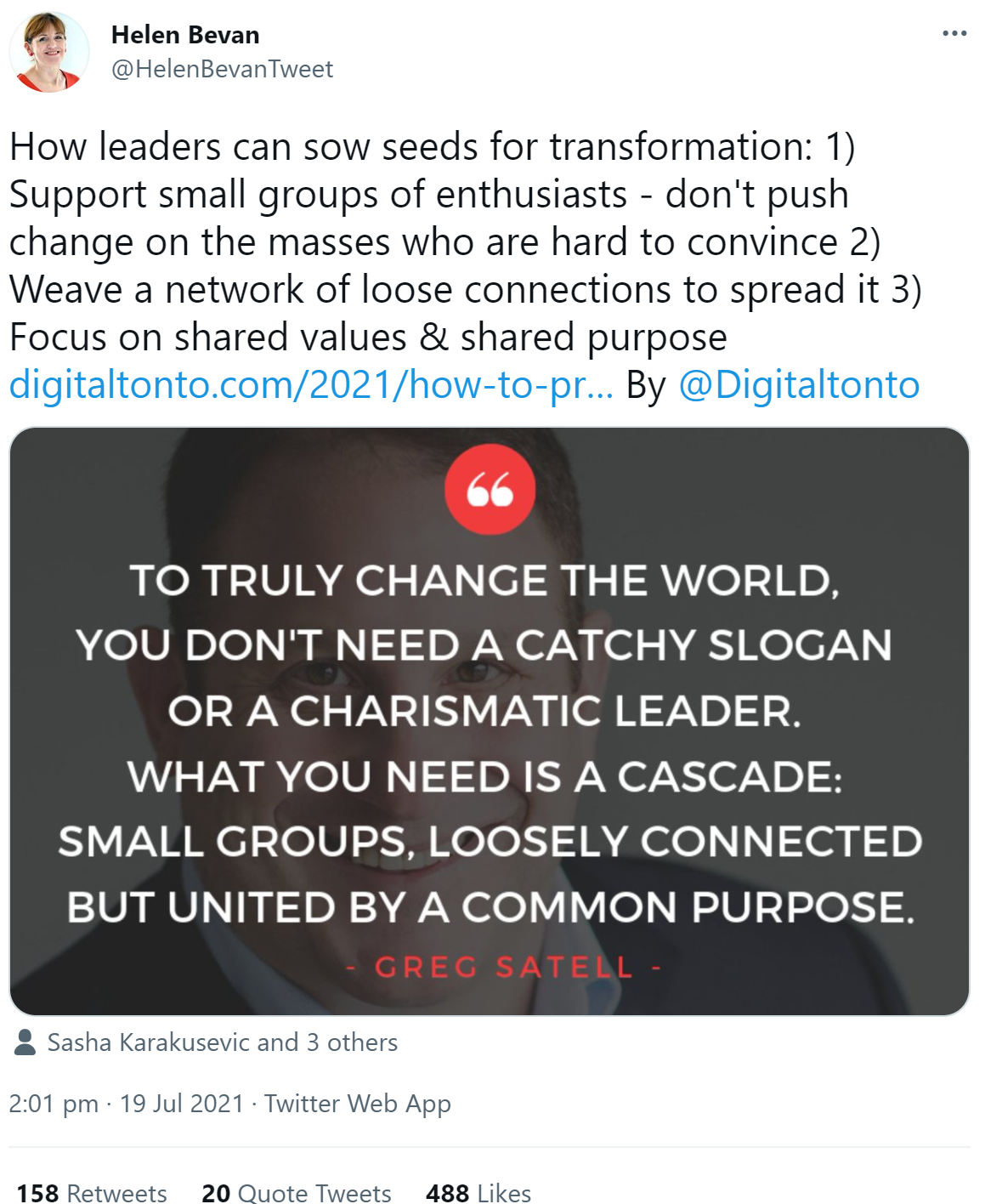



Moving into more integrated systems of working means thinking differently about how to build accountability across systems, beyond top-down hierarchy. We must find a spot that balances psychological safety & accountability. Read more. 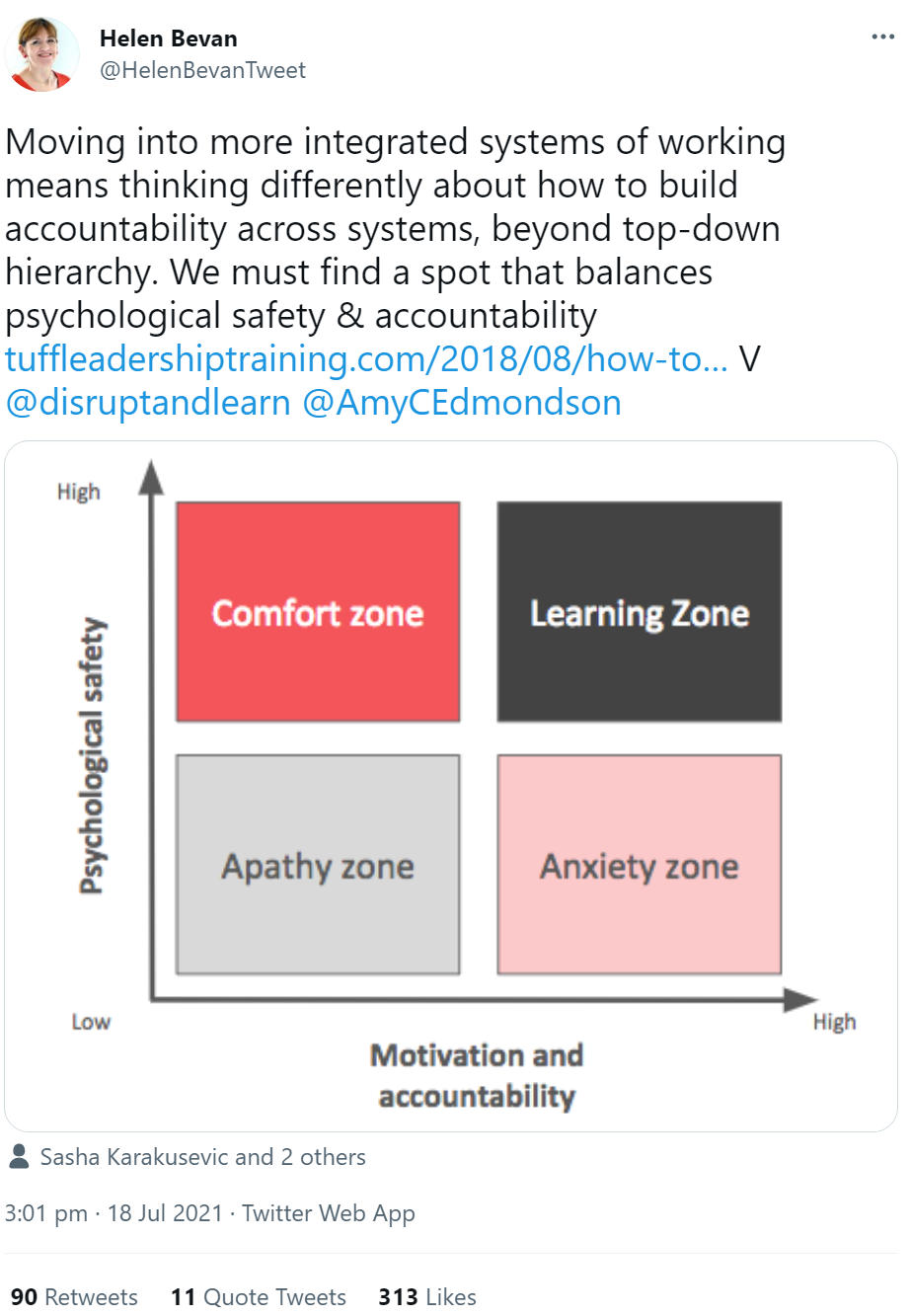
Change fatigue is typically a bigger problem for organisations than resistance to change. It is largely preventable. As we plan for a radically different post-pandemic world, we should be considering ways to avoid change fatigue now. 
Development
Another lens on the fixed vs.growth mindset debate. Are leaders born or made? Researchers say the "correct" answer to this question matters less than what people think it is: whether many people can access development or only a "chosen few"

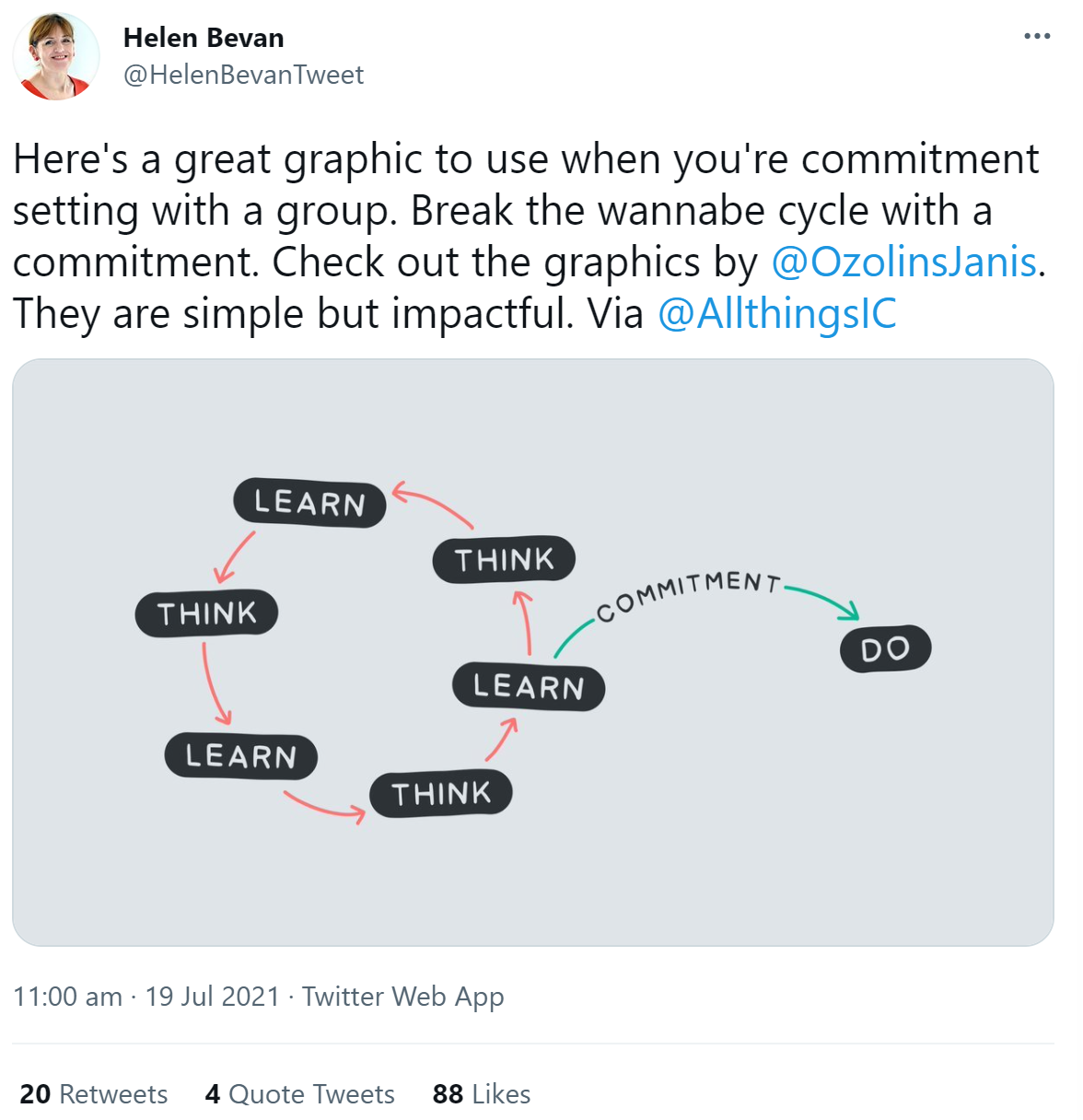
A new perspective on retaining our people. Research showed that internal candidates turned down for a job were nearly 2X as likely to leave their organisation. Internal rejection leads to reduced job satisfaction & reduced commitment if action isn't taken.



/Passle/5a5c5fb12a1ea2042466f05f/MediaLibrary/Images/6168334917af5b10f4bf1d30/2022-04-14-15-27-52-040-62583d78f636e9115805b2d5.png)
/Passle/5a5c5fb12a1ea2042466f05f/MediaLibrary/Images/6168334917af5b10f4bf1d30/2022-08-05-09-59-36-465-62ecea08f636e906acfed639.jpg)
/Passle/5a5c5fb12a1ea2042466f05f/MediaLibrary/Images/6168334917af5b10f4bf1d30/2022-07-28-14-57-17-405-62e2a3cdf636e9180c9835cb.png)
/Passle/5a5c5fb12a1ea2042466f05f/MediaLibrary/Images/6168334917af5b10f4bf1d30/2022-07-20-10-16-56-533-62d7d618f636ea07987f6668.png)
/Passle/5a5c5fb12a1ea2042466f05f/MediaLibrary/Images/6168334917af5b10f4bf1d30/2022-07-15-09-55-32-858-62d13994f636ea1398e71aa9.jpg)